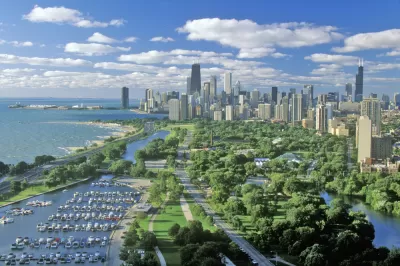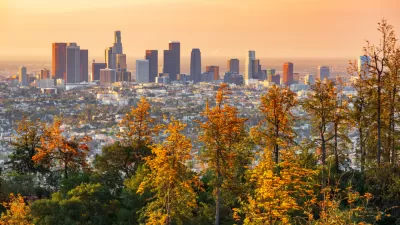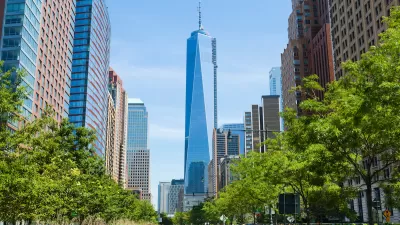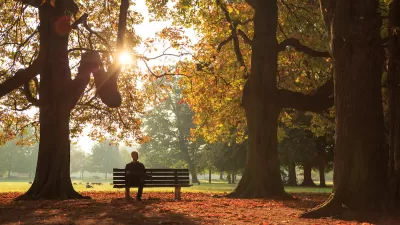As part of the Trillion Trees Initiative, cities across the country are pledging to plant trees and restore urban forests to fight climate change and cool off disadvantaged communities.

More trees are needed to improve air quality in communities that have been disproportionately affected by pollution and climate change. These communities are typically not only lacking in trees; many of them also face a variety of other challenges that adversely impact the health and well-being of residents.
Jad Daley, president and chief executive officer of American Forests, says, “It’s not just about more trees in cities. If you show me a map of tree cover in any city, you’re showing me a map of race and income levels. We see this as nothing less than a moral imperative.”
American Forests is part of the Trillion Trees Initiative, "a global push to encourage reforestation to capture carbon and slow the effects of global heating." Specifically, a coalition of U.S. cities, companies, and nonprofits has committed to planting and restoring 855 million of trees by 2030. The group recognizes that to truly address climate change, the initiative must be strategic and "reach traditionally disinvested neighborhoods and communities that need cooling, shade, and green space," writes Patrick Sisson.
Adrian Benepe, vice president and director of national programs for the Trust for Public Land, says, “There isn’t a machine invented that can suck down carbon better than trees.” New research by the Natural Areas Conservancy, a New York-based group focused on preserving and protecting urban forests, highlights just how efficient trees can be at storing carbon.
"The roughly 6 million trees in the New York City’s 7,300 acres of natural forested areas represent a quarter of the city’s tree canopy, due to their density, but they account for 69 percent of the stored carbon and 83 percent of the sequestered carbon across the city," notes Sisson.
In addition to maintaining existing urban forests in parks, cities should also focus on ways to increase dense tree canopy coverage outside of parklands. In places like New York City, finding room for new, dense forests is increasingly challenging, but there are still some opportunities. For example, the city can use areas such as abandoned railways, utility corridors, and public right-of-ways. Cities should particularly be creative in finding locations and solutions for providing more trees in under-resourced communities.
FULL STORY: Can Planting Trees Make a City More Equitable?

Maui's Vacation Rental Debate Turns Ugly
Verbal attacks, misinformation campaigns and fistfights plague a high-stakes debate to convert thousands of vacation rentals into long-term housing.

Planetizen Federal Action Tracker
A weekly monitor of how Trump’s orders and actions are impacting planners and planning in America.

In Urban Planning, AI Prompting Could be the New Design Thinking
Creativity has long been key to great urban design. What if we see AI as our new creative partner?

Florida Seniors Face Rising Homelessness Risk
High housing costs are pushing more seniors, many of them on a fixed income, into homelessness.

Massachusetts Budget Helps Close MBTA Budget Gap
The budget signed by Gov. Maura Healey includes $470 million in MBTA funding for the next fiscal year.

Milwaukee Launches Vision Zero Plan
Seven years after the city signed its Complete Streets Policy, the city is doubling down on its efforts to eliminate traffic deaths.
Urban Design for Planners 1: Software Tools
This six-course series explores essential urban design concepts using open source software and equips planners with the tools they need to participate fully in the urban design process.
Planning for Universal Design
Learn the tools for implementing Universal Design in planning regulations.
Gallatin County Department of Planning & Community Development
Heyer Gruel & Associates PA
JM Goldson LLC
City of Camden Redevelopment Agency
City of Astoria
Transportation Research & Education Center (TREC) at Portland State University
Jefferson Parish Government
Camden Redevelopment Agency
City of Claremont





























